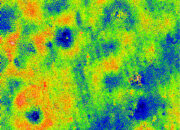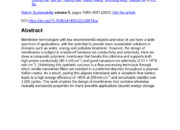The remarkable material known as graphene, a monolayer of carbon atoms arranged in a two-dimensional lattice, has garnered significant attention in recent decades due to its exceptional properties, including high electrical conductivity, mechanical strength, and thermal stability. As research progresses, scientists have begun to explore the intricate behaviors of graphene defects that emerge during synthesis and manipulation. The ability to effectively track and understand these defects as they evolve over time opens new avenues for the practical applications of graphene in various advanced technologies. This article delves into the methodologies and implications of tracking graphene defects which, as they creep and climb, present both challenges and opportunities for innovation.
Defects in graphene play a pivotal role in determining its overall performance in applications ranging from nanoelectronics to energy storage. These imperfections can manifest in numerous forms, including vacancies, interstitials, and adatoms, each affecting the material’s electrical, mechanical, and thermal characteristics. Understanding the dynamics of these defects, therefore, becomes essential. The quest to track these anomalies has given rise to a myriad of advanced characterization techniques, which have evolved remarkably over the last decade.
Among the myriad of techniques employed for defect tracking, atomic force microscopy (AFM) and transmission electron microscopy (TEM) stand out due to their high spatial resolution. AFM operates by scanning a sharp tip across the surface of a graphene sample, enabling real-time visualization of defects at the nanoscale. This allows researchers to discern not only the positions of defects but also their effects on local electronic properties, such as charge mobility. Complementarily, TEM provides detailed imaging of the atomic arrangements within the graphene lattice, improving our understanding of defect types and their interactions.
Another noteworthy technique that has emerged is Raman spectroscopy, which relies on inelastic scattering of light to provide insight into the vibrational modes of graphene. The presence of defects can alter the features observed in Raman spectra, particularly the intensity ratio of the D band to the G band. This ratio serves as a direct metric for defect density. As researchers continue to refine these spectral techniques, they reveal much about the defect dynamics—affording insights into the mechanisms behind defect proliferation and healing processes.
Despite the efficacy of these characterization methods, the dynamic and often stochastic nature of defects in graphene presents inherent challenges. The notion of defects “creeping and climbing” speaks to the subsystems of motion observed during thermal and mechanical stress applications. Under varied environmental conditions, defects may migrate along the graphene lattice, coalesce, or even contribute to the generation of new defects. The intricate dance of these imperfections may often elude conventional measurement techniques, necessitating the development of more intricate models and enhanced computational methods for defect behavior prediction.
In order to make significant strides in tracking these defects, researchers have begun to incorporate machine learning algorithms into their analytical processes. These computational approaches enable the extraction of patterns from complex datasets generated during high-throughput experiments. By training models on extensive defect imaging datasets, researchers are honing their ability to predict defect behavior under varied conditions, unlocking valuable insights into defect dynamics that were previously impenetrable.
The implications of effectively tracking graphene defects extend beyond mere observation; they may drastically shift the paradigm of graphene application in industry. For instance, in the realm of energy storage, understanding the defect landscape may inform the design of graphene-based batteries that leverage localized defects to enhance charge retention. Likewise, in the context of nanoelectronics, the engineering of defect densities may lead to the development of transistors with improved switching capabilities.
Moreover, the ability to manipulate defects could foster the synthesis of tailored graphene materials with bespoke properties. By deliberately introducing specific types of defects, researchers may create graphene variants that manifest unique functionalities. This area of research underscores the significant interplay between defect dynamics and material properties—an interplay that could yield innovations in composite materials, sensors, and even quantum technologies.
As research in this furrowed ground progresses, it is crucial to establish a multidisciplinary dialogue between physicists, materials scientists, and engineers. A comprehensive understanding of defect tracking requires a confluence of expertise, drawing from the insights gained across various fields encompassing solid-state physics, computational modeling, and nanotechnology. It is only through such collaboration that the true potential of graphene can be unlocked, transforming theoretical predictions into tangible applications.
In conclusion, the investigation and tracking of graphene defects emerge as a compelling frontier in material science. As these defects creep and climb through the graphene lattice, they offer both challenges and opportunities for technological advancement. The promising methodologies, such as advanced microscopy techniques, spectroscopic analyses, and machine learning applications, are paving the way for a deeper understanding of how defects influence material performance. By harnessing this knowledge, the scientific community stands on the precipice of unlocking new possibilities, thereby reshaping our approach to numerous industrial applications that hinge upon the unique capabilities of graphene. This evolution not only piques the curiosity of researchers but also holds profound implications for the future of material design and engineering.










